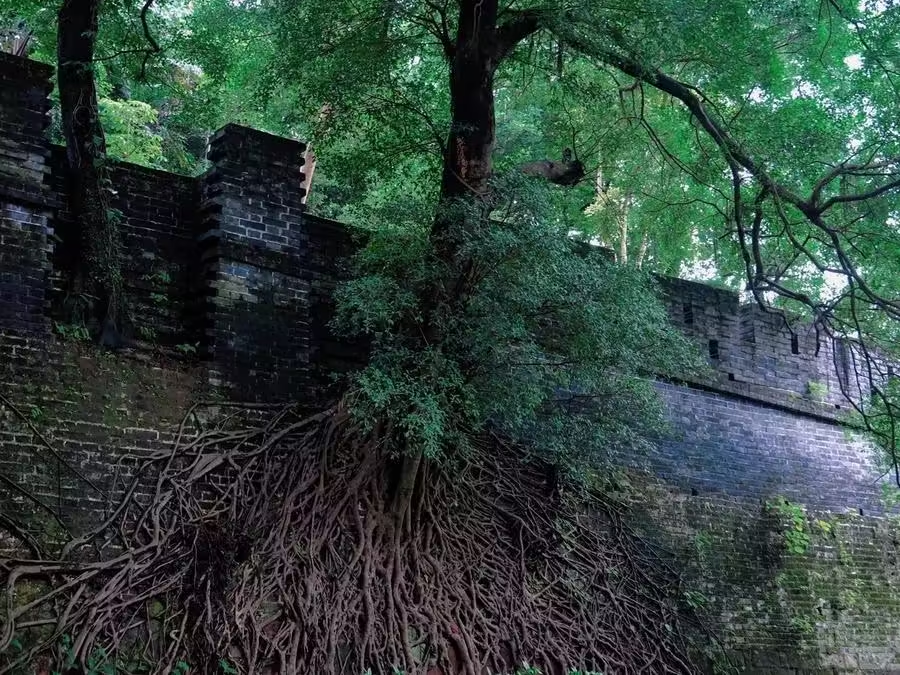Yuexiu Park (越秀公园) is one of the oldest and largest comprehensive parks in Guangzhou, China. The park features the main peak of Yuejing Hill, along with six surrounding hills, including Osmanthus Hill, Wood Shell Hill, and Carp Hill. It also includes three artificial lakes: Beixiu Lake, Nanxiu Lake, and Dongxiu Lake, all of which offer boating opportunities.
Dongxiu Lake provides a view of the TV Tower and features bumper boats, along with a children’s playground along its shores. Nanxiu Lake is known for its expansive lawn and offers views of the Zhenhai Tower, making it an ideal spot for painting and sketching. Beixiu Lake is characterized by its lush greenery and includes attractions like a flower pavilion, a central island, and a koi pond in the Jin Garden.
Within the park, visitors can find a stone archway built during the Qing Dynasty, inscribed with the words “Ancient Chu Pavilion,” which many historical texts regard as a prototype of Guangzhou. Other notable attractions in the park include the Zhenhai Tower, ancient city walls, the Sifang Battery, the Sun Yat-sen Monument, a memorial stone for Sun Yat-sen’s office, the grave of Wu Tingfang, the Ming Dynasty mausoleum for the Shaowu Lords, the Seamen’s Pavilion, the Five Rams statue, and various sculptures depicting the legend of the Five Rams.
Table of Contents
Basic Information
| Estimated Length of Tour | 1 – 2 hours |
| Ticket Price | Free |
| Opening Hours | 6.00 – 22.00 |
| Telephone Number | 0086-020-86661950 |
Location and Transportation
Yuexiu Park is located at 988 Jiefang North Road, Yuexiu District, Guangzhou, Guangdong Province, China. To get there, you can choose one of the following ways:
Bus: Take bus 21, 22, 58A, 58, 101, 105, 108, 113, 124, 182, 211, 244A, 244, 265, 273, 519, 528, 555, or 556 and get off at Yuexiu Park Stop (越秀公园站).
Metro: The closest metro station to the attraction is Yuexiu Park (越秀公园) on line 2. After getting out of the station from Exit B1, you will be standing at the northwest gate of the park.
Highlights of Yuexiu Park
Ming Dynasty Ancient City Wall

Located just behind the Sun Yat-sen Monument, a segment of the ancient city wall stretches for approximately 200 meters, winding through dense foliage. This wall begins at the East Xiaobei Gate (now Xiaobei Garden) and extends westward to the West Dabeimen Gate (where Jiefang North Road meets Panfu Road), spanning over 1,100 meters in total. It is the only remaining section of the Ming Dynasty city wall in Guangzhou and is recognized as the oldest existing wall in the city. Constructed in the early Ming Dynasty during the reign of Zhu Liangzu, the wall was built in the 13th year of the Hongwu period (1380), making it over 600 years old. This section of the wall is a historical legacy of Guangzhou’s fortifications and, together with the Zhenhai Tower and the Bell Tower behind Wuxian Temple, is considered one of the three significant ancient monuments of early Ming Guangzhou.
Zhenhai Tower

Zhenhai Tower, also known as the “Five-Story Tower” due to its height, was built in the 13th year of the Hongwu period (1380) by Zhu Liangzu, the Marquis of Yongjia. Originally named “Wanghai Tower,” it was later renamed “Zhenhai Tower” to convey the meaning of safeguarding the coastal territories. In 1956, it was converted into the Guangzhou Museum. Zhenhai Tower is the best-preserved, most imposing, and culturally significant ancient structure in Guangzhou. Standing at 28 meters tall and 31 meters wide, it features five stories. The first and second levels are constructed of red sandstone blocks, while the upper three levels are made of brick walls that taper inwards, giving it a pagoda-like appearance. With its red walls and green tiles, the tower boasts a unique and ancient design. In front of the tower are two red sandstone lions, each standing two meters tall, carved during the Ming Dynasty. During the Qing Dynasty, Zhenhai Tower was the tallest building in Guangzhou. From the tower’s rooftop, visitors can enjoy panoramic views of the Pearl River and Baiyun Mountain.
Five Rams Stone Sculpture

The Five Rams Stone Sculpture stands proudly on the Mukegao Hill in Yuexiu Park, recognized as a key protected cultural relic of Guangzhou. Completed in 1959, the sculpture was created by sculptors Yin Jichang, Chen Benzhen, and Kong Qiuchuan. It is made up of 130 pieces of granite, towering over 10 meters high and weighing 53 cubic meters in total. This sculpture is regarded as the symbol of “Yangcheng,” or the City of Rams, reflecting Guangzhou’s nickname.
Sun Yat-sen Monument

The Sun Yat-sen Monument was erected to honor the revolutionary leader Dr. Sun Yat-sen. It is located at the top of Guanyin Mountain, accessible by climbing the “Hundred Steps Stairs,” which consists of 498 steps. The monument, designed by the renowned architect Lü Yanzhi, was built in 1929. It is constructed entirely from granite and stands 37 meters tall, featuring a square base that tapers as it rises to a point. Inside, a spiral staircase leads to the top, with balconies on the first and second levels providing stunning views. Higher up, each level has windows for panoramic vistas. The base of the monument is adorned with 26 stone rams, symbolizing the city, and the front features a massive granite slab (approximately 7 meters long and 4 meters wide) engraved with Sun Yat-sen’s will. The platform surrounding the monument is enclosed by iron railings and lush greenery.
Guangzhou Art Museum

The Guangzhou Art Museum is situated to the east of Zhenhai Tower on Yuexiu Mountain. This modern cultural building features traditional Chinese architectural styles. Originally established as the Zhongyuan Library in 1927 by the Kuomintang elder Li Jishen, it was designed by architect Yang Xizong and completed in 1930. The structure, made of reinforced concrete, is modeled after the Wenhua Hall of the Forbidden City in Beijing. In 1957, following an initiative by Mayor Zhu Guang, the Guangzhou government approved its transformation into an art museum, making it one of the earliest art museums established in China. An extension behind the main building includes two branches: the Gao Jianfu Memorial Hall and the Chen Shuren Memorial Hall.


